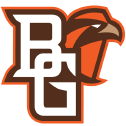What do they do?
Engrave or etch metal, wood, rubber, or other materials. Includes such workers as etcher-circuit processors, pantograph engravers, and silk screen etchers.
Also known as:
Acid Etch Operator, Award Machine Operator, Chemical Engraver, Electronic Engraver, Engraver, Enhanced Environmental Operator, Etcher, Glass Etcher, Laser Engraver, Photo Engraver, Screen Making Technician, Wet Process Technician
-
0%
Change
Ranks #31 in job growth rate40Job Openings
Ranks #17 in net job growth
Looking for colleges that offer a specific major? Use the College Match Tool to find your best-matched schools and discover your estimated Net Price!
- Some college, no degree (28%)
- High school diploma equivalent (25%)
- Bachelor's degree (21%)
- Associate's degree (12%)
- Less than high school diploma (9%)
- Master's degree (4%)
- Doctorate or Professional Degree (<1%)
People in this career often know a lot about:
- Production and Processing - Knowledge of raw materials, production processes, quality control, costs, and other techniques for maximizing the effective manufacture and distribution of goods.
- Customer and Personal Service - Knowledge of principles and processes for providing customer and personal services. This includes customer needs assessment, meeting quality standards for services, and evaluation of customer satisfaction.
People in this career often have talent in:
- Near Vision - The ability to see details at close range (within a few feet of the observer).
- Arm-Hand Steadiness - The ability to keep your hand and arm steady while moving your arm or while holding your arm and hand in one position.
- Control Precision - The ability to quickly and repeatedly adjust the controls of a machine or a vehicle to exact positions.
- Oral Comprehension - The ability to listen to and understand information and ideas presented through spoken words and sentences.
People in this career often do these activities:
- Inspect finishes of workpieces or finished products.
- Cut industrial materials in preparation for fabrication or processing.
- Polish materials, workpieces, or finished products.
- Apply protective or decorative finishes to workpieces or products.
- Engrave designs, text, or other markings onto materials, workpieces, or products.
- Mix substances to create chemical solutions.
- Design templates or patterns.
- Review blueprints or other instructions to determine operational methods or sequences.
- Set equipment controls to meet cutting specifications.
- Trim excess material from workpieces.
- Measure materials to mark reference points, cutting lines, or other indicators.
- Calculate dimensions of workpieces, products, or equipment.
- Clean workpieces or finished products.
- Operate equipment to print images or bind printed images together.
- Monitor equipment operation to ensure that products are not flawed.
- Inspected printed materials or other images to verify quality.
- Mount materials or workpieces onto production equipment.
- Immerse objects or workpieces in cleaning or coating solutions.
- Mount attachments or tools onto production equipment.
- Operate cutting equipment.
- Determine production equipment settings.
- Remove products or workpieces from production equipment.
- Draw guide lines or markings on materials or workpieces using patterns or other references.
- Fill cracks, imperfections, or holes in products or workpieces.
- Select production equipment according to product specifications.
- Position patterns on equipment, materials, or workpieces.
This page includes data from:

 Occupation statistics: USDOL U.S. Bureau of Labor Statistics Occupational Employment Statistics
Occupation statistics: USDOL U.S. Bureau of Labor Statistics Occupational Employment Statistics
 Videos: CareerOneStop, USDOL/ETA and the Minnesota Department of Employment & Economic Development
Videos: CareerOneStop, USDOL/ETA and the Minnesota Department of Employment & Economic Development








